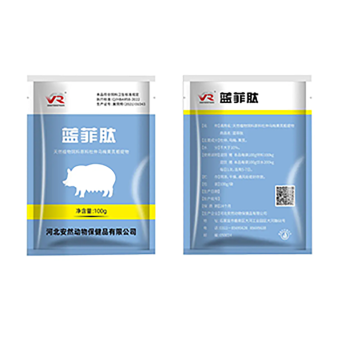- Afrikaans
- Albanian
- Amharic
- Arabic
- Armenian
- Azerbaijani
- Basque
- Belarusian
- Bengali
- Bosnian
- Bulgarian
- Catalan
- Cebuano
- Corsican
- Croatian
- Czech
- Danish
- Dutch
- English
- Esperanto
- Estonian
- Finnish
- French
- Frisian
- Galician
- Georgian
- German
- Greek
- Gujarati
- Haitian Creole
- hausa
- hawaiian
- Hebrew
- Hindi
- Miao
- Hungarian
- Icelandic
- igbo
- Indonesian
- irish
- Italian
- Japanese
- Javanese
- Kannada
- kazakh
- Khmer
- Rwandese
- Korean
- Kurdish
- Kyrgyz
- Lao
- Latin
- Latvian
- Lithuanian
- Luxembourgish
- Macedonian
- Malgashi
- Malay
- Malayalam
- Maltese
- Maori
- Marathi
- Mongolian
- Myanmar
- Nepali
- Norwegian
- Norwegian
- Occitan
- Pashto
- Persian
- Polish
- Portuguese
- Punjabi
- Romanian
- Russian
- Samoan
- Scottish Gaelic
- Serbian
- Sesotho
- Shona
- Sindhi
- Sinhala
- Slovak
- Slovenian
- Somali
- Spanish
- Sundanese
- Swahili
- Swedish
- Tagalog
- Tajik
- Tamil
- Tatar
- Telugu
- Thai
- Turkish
- Turkmen
- Ukrainian
- Urdu
- Uighur
- Uzbek
- Vietnamese
- Welsh
- Bantu
- Yiddish
- Yoruba
- Zulu
11 月 . 04, 2024 13:01 Back to list
Effects and Applications of Tylosin Injection in Cattle Management and Health
Tylosin Injection in Cattle Overview and Applications
Tylosin is a macrolide antibiotic that is widely used in veterinary medicine, particularly for the treatment and prevention of bacterial infections in livestock, including cattle. It is known for its effectiveness against a variety of gram-positive bacteria and some gram-negative bacteria, making it a valuable tool in managing health in cattle herds. This article will explore the applications, benefits, and considerations associated with tylosin injection in cattle.
Background on Tylosin
Tylosin was first discovered in the 1950s as a result of research on soil bacteria. It belongs to the same class of antibiotics as erythromycin and is produced by the fermentation of the bacterium *Streptomyces fradiae*. Due to its unique mechanism of action, tylosin interferes with protein synthesis in susceptible bacteria, leading to their eventual death. It is available in various formulations, including injections, oral preparations, and feed additives, allowing for flexibility in administration based on specific health needs.
Uses of Tylosin in Cattle
Tylosin is primarily administered by injection for the treatment of specific bacterial infections and diseases in cattle. It is commonly used to manage respiratory infections, such as pneumonia, which can be a significant issue in cattle, especially in young calves or those raised in crowded conditions. It is also effective against gastrointestinal infections, such as those caused by *Mycoplasma* species and certain strains of *E. coli*.
Furthermore, tylosin is often incorporated into treatment protocols for infections associated with the udder, such as mastitis, which can severely impact milk production and overall herd health
. The injection can help reduce the severity of the infection, leading to better recovery outcomes.Benefits of Tylosin Injection
One of the primary advantages of tylosin injection is its rapid absorption and high bioavailability in the bloodstream, which allows for quick action against bacterial infections. This is particularly important in acute cases where timely intervention can mean the difference between recovery and severe complications or even death.
tylosin injection in cattle

Additionally, tylosin has been shown to enhance the growth rate of cattle when used in subtherapeutic doses. This has led to its use as a growth promoter in feed formulations, contributing to improved feed efficiency and weight gain. However, the use of antibiotics for growth promotion has come under scrutiny, leading to increased regulations and discussions about responsible antibiotic use in agriculture.
Considerations and Challenges
Despite its benefits, the use of tylosin in cattle also presents challenges. One of the most significant concerns is the potential for antibiotic resistance. The overuse or misuse of antibiotics, including tylosin, can lead to the development of resistant bacterial strains, posing a threat not only to animal health but also to human health as these resistant bacteria can be transferred through the food chain or direct contact.
Due to this concern, veterinarians and cattle producers are encouraged to use tylosin judiciously and in accordance with prescribed guidelines. This includes adhering to recommended dosages and treatment durations, as well as avoiding unnecessary use in healthy animals.
Regulatory Environment
The use of tylosin in cattle is subject to regulatory oversight, with various countries implementing strict guidelines to ensure its safe use. In the United States, for example, tylosin is classified as a veterinary feed directive (VFD) drug, requiring a veterinarian’s prescription for its use in feed. This regulation helps to ensure that tylosin is used responsibly, promoting better health outcomes for cattle while addressing public health concerns related to antibiotic resistance.
Conclusion
Tylosin injection is a critical tool in the management of bacterial infections in cattle, offering benefits in terms of effectiveness and rapid action. However, it is essential to navigate its use with caution, considering both the advantages and the challenges associated with antibiotic resistance. As veterinary practices evolve and more emphasis is placed on responsible antibiotic use, the role of tylosin in cattle will likely continue to be an area of focus for research and implementation in veterinary medicine. Proper management and oversight are key to maximizing its benefits while minimizing potential risks to animal and public health.
-
The Power of Radix Isatidis Extract for Your Health and Wellness
NewsOct.29,2024
-
Neomycin Sulfate Soluble Powder: A Versatile Solution for Pet Health
NewsOct.29,2024
-
Lincomycin Hydrochloride Soluble Powder – The Essential Solution
NewsOct.29,2024
-
Garamycin Gentamicin Sulfate for Effective Infection Control
NewsOct.29,2024
-
Doxycycline Hyclate Soluble Powder: Your Antibiotic Needs
NewsOct.29,2024
-
Tilmicosin Premix: The Ultimate Solution for Poultry Health
NewsOct.29,2024













